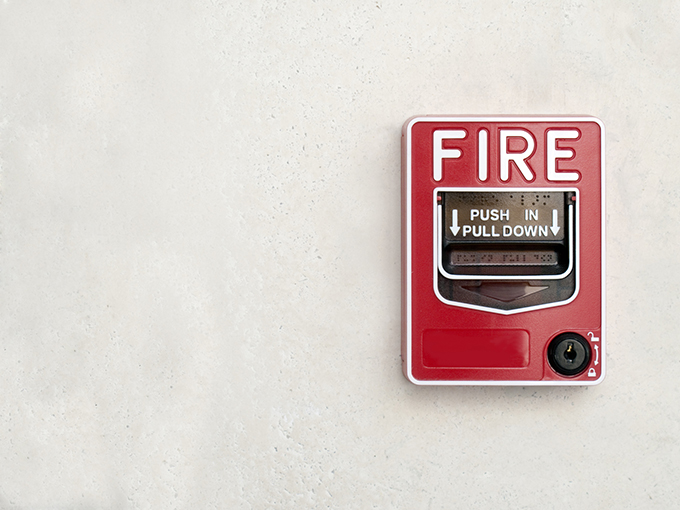Each October, organizations like the National Fire Protection Association (NFPA), Occupational Safety and Health Administration (OSHA) and others observe Fire Prevention Week and Month by spreading fire safety awareness and helping protect homes, businesses and people. The annual event began in 1911 to commemorate the Great Chicago Fire, a fire that killed approximately 300 people and destroyed over 17,000 structures.
Whether your Post partakes in Fire Prevention Week or Month, or works on fire safety procedures year-round, it is important to be aware of fire hazards and have a plan in place. Because as OSHA states, “fire safety becomes everyone’s job”.
Planning Fire Safety Procedures for Posts

Create an emergency action plan
As an organization, you are obligated to maintain the fire code requirements of your state and city. Emergency action plans may also be required of your business. Exits and safety signage may be subject to annual inspections. When creating an emergency action plan, OSHA requires a plan that:
- Describes the routes for workers to use and procedures to follow.
- Accounts for all evacuated employees.
- Remains available for employee review.
- Includes procedures for evacuating disabled employees.
- Addresses evacuation of employees who stay behind to shut down critical equipment.
- Includes preferred means of alerting employees to a fire emergency.
- Provides for an employee alarm system throughout the workplace.
- Requires an alarm system that includes voice communication or sound signals such as bells, whistles, or horns.
- Makes the evacuation signal known to employees.
- Ensures the provision of emergency training.
- Requires employer review of the plan with new employees and with all employees whenever the plan is changed.
Practice evacuations with Post employees and regular volunteers. Ensure evacuation routes are posted where members and guests can see them.
Identify key fire risks
There are several common workplace fire hazards, including:
- Cooking appliances
- Electrical equipment
- Power strips and other electrical hazards
- Lighting equipment
- Heaters
- Arson
- Smoking materials
- Office/entertainment equipment
Consider your Posts risks and pay special attention to fire prone areas.
Educate members, employees and volunteers
In addition to sharing evacuation routes, exit locations and fire protection equipment, encourage your Post members to speak up if they notice fire hazards, such as frayed wiring, overloaded power strips, dysfunctional smoke detectors and damaged power cords.
Smoke detectors, carbon monoxide detectors and fire extinguishers
Install smoke alarms and test them at least once a month. Replace all smoke alarms when they are 10 years old or stop responding when tested.
Ensure detectors meet the needs of all visitors to the Post, including those with sensory or physical disabilities. Consider detectors that include a flash alert for people who are deaf or hard of hearing.
Fire extinguishers should be mounted so that employees, members and guests can locate and use them if necessary. Ensure Post employees are familiar with general extinguisher use. Extinguishers should be maintained and inspected per regulations.
Protecting Your Post from Fire Risks
Even with these fire safety procedures for Posts implemented, your organization could still experience a fire, and a fire at your Post’s property could be detrimental. Beyond extensive property damage, members or guests could be harmed or lose the vital sense of camaraderie your Post offers.
With Property insurance from Lockton Affinity, you can protect your Post from the costs associated with fire damage.
See what coverage will cost your Post today by completing a price indication request. It takes less than five minutes to complete, and our dedicated team will reach out with a tailored proposal for your Post. Or contact our team directly at (800) 669-9944.

Recent Comments